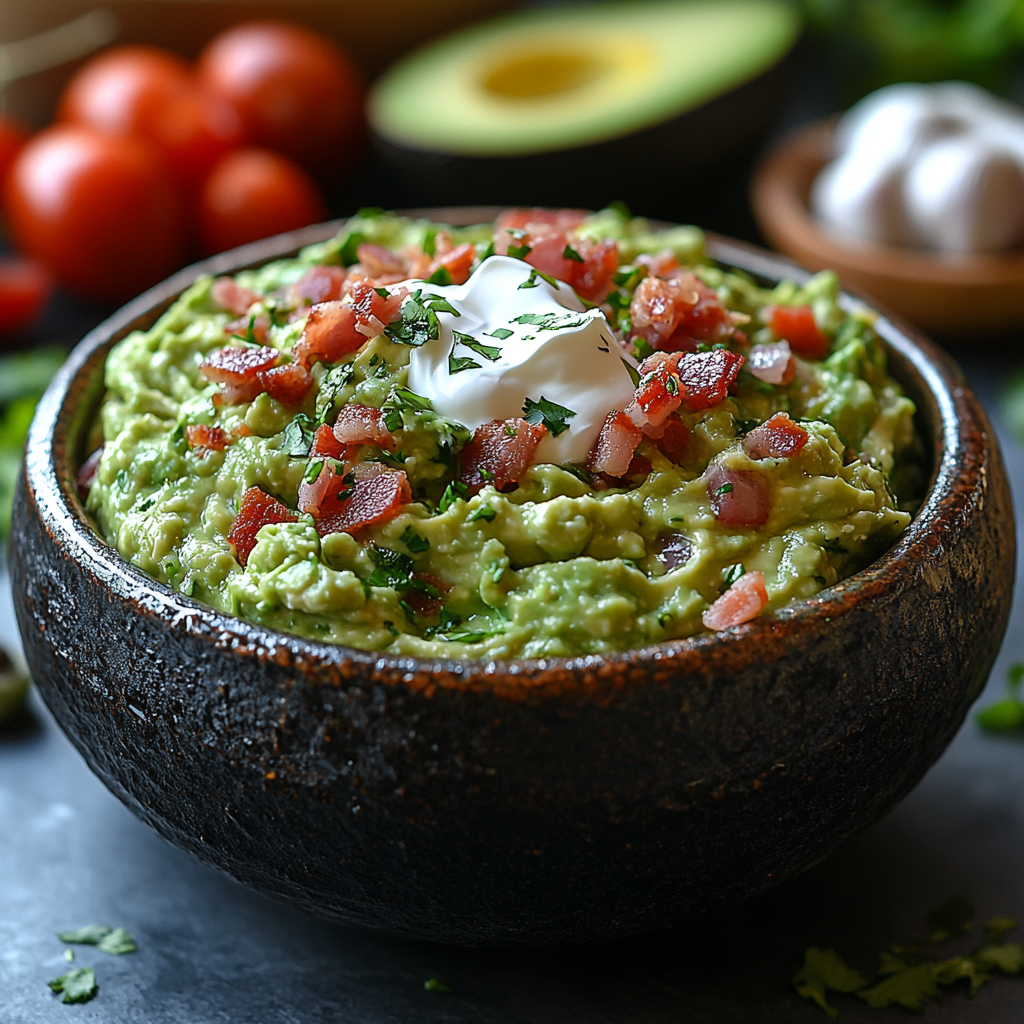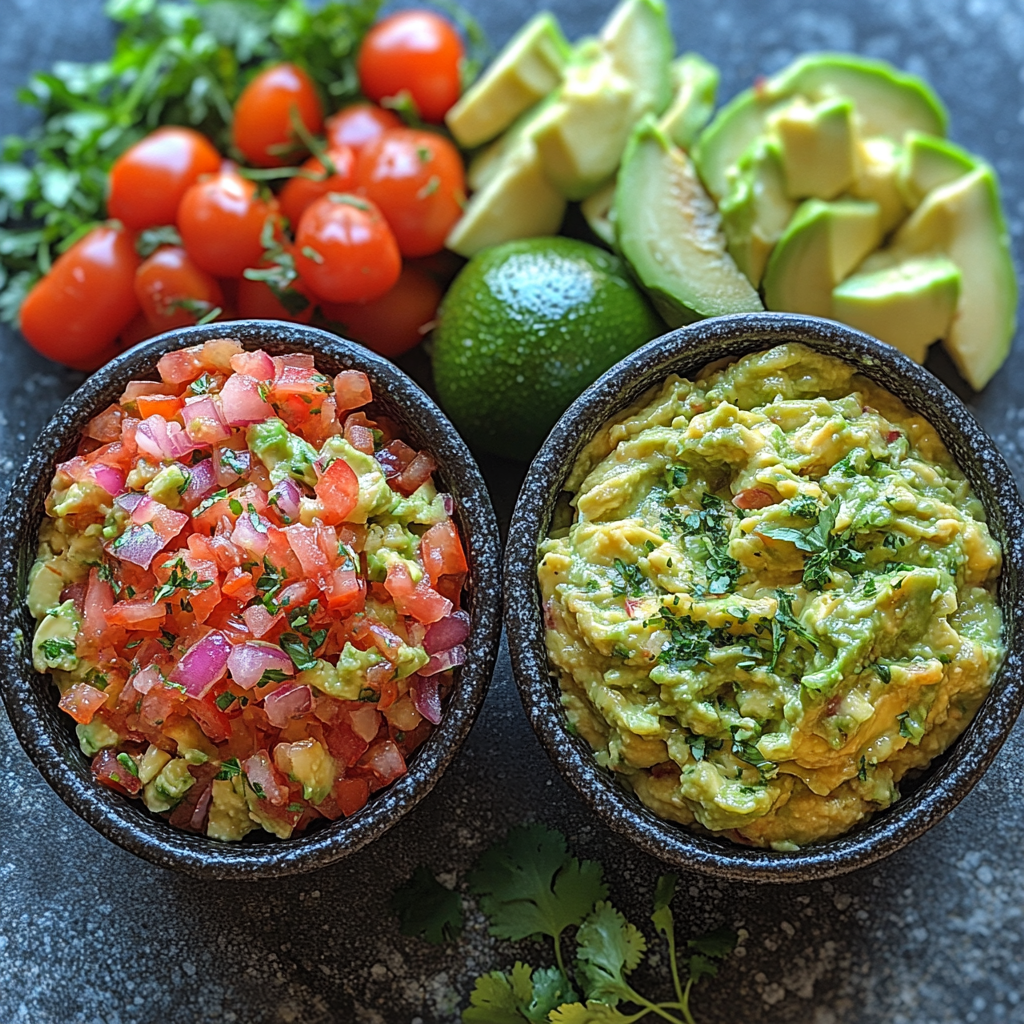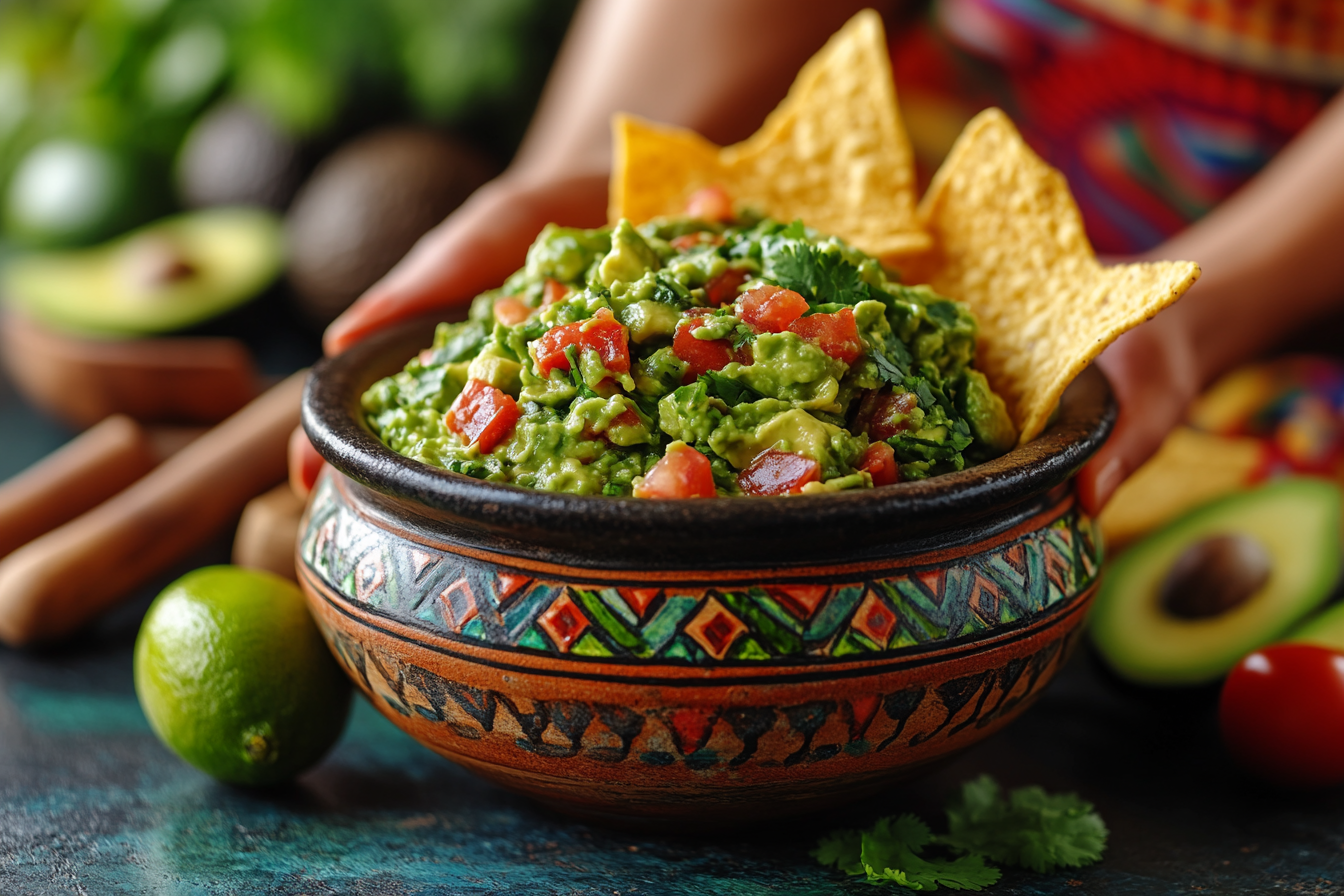Guacamole is a globally loved dish, but did you know that its preparation varies significantly between Mexico and the United States? This article explores the difference between Mexican guacamole and American guacamole, examining ingredients, texture, cultural significance, and even nutritional content. We’ll also look at regional variations and how modern trends have influenced these two versions.
Ingredients: Comparing Mexican Guacamole and American Guacamole

One of the most striking differences between Mexican guacamole and American guacamole lies in their ingredients. Mexican guacamole is known for its simplicity, allowing the avocado to be the centerpiece. In contrast, American guacamole often includes a variety of additional ingredients, creating a more complex flavor profile.
Traditional Mexican Guacamole Ingredients
In Mexican guacamole, the ingredients are minimal, highlighting the natural flavor of avocados:
- Avocados: The main ingredient, prized for its creamy texture and mild flavor.
- Lime juice: Adds acidity and helps prevent the avocado from browning.
- Salt: Essential for enhancing the flavors.
- Cilantro: Provides a fresh, herbal note.
- Jalapeños or serrano peppers: Add a touch of heat and crunch.
- Onions: Contribute sharpness and additional texture.
Common Ingredients in American Guacamole
American guacamole often takes a more creative approach, incorporating additional ingredients:
- Garlic: Adds a bold, savory flavor.
- Tomatoes: Introduce sweetness and acidity.
- Sour cream: Makes the guacamole creamier and mellower.
- Mayonnaise: Increases creaminess and richness.
- Bacon: Adds a smoky, salty flavor and crispy texture.
- Cheese: Often used as a topping for added richness.
In American cuisine, guacamole is sometimes customized with ingredients like corn, black beans, or even fruits like mango, which introduce new textures and flavors, reflecting the diverse culinary influences in the United States.
What Not to Do When Making Guacamole
Avoid these common mistakes to ensure your guacamole is authentic and delicious.
Texture and Consistency in Mexican vs. American Guacamole

The texture of guacamole is another point of distinction between the Mexican and American versions. Mexican guacamole tends to be chunkier, with avocado pieces left slightly intact to provide a hearty texture. This rustic consistency allows the natural creaminess of the avocado to shine without being overly processed.
In contrast, American guacamole is often smoother and creamier, achieved by mixing in ingredients like sour cream or using a food processor. This smoother texture makes it easier to spread on sandwiches or toast, aligning with American culinary preferences.
Serving Styles and Cultural Significance
In Mexican culture, guacamole is more than just a dip; it’s a symbol of celebration and tradition. It is commonly served during special occasions and as a complement to dishes like tacos, tamales, or grilled meats. The simplicity of Mexican guacamole allows it to enhance, rather than overpower, the flavors of other dishes.
American guacamole, however, has evolved into a popular party dip, frequently served with tortilla chips or as a topping for various dishes, from burgers to salads. The variations in American guacamole reflect a more experimental approach, embracing diverse ingredients and flavors.
Delicious Avocado Stuffed with Shrimp and Crab Salad Recipe
For a twist on how avocados can be used, try our delicious avocado stuffed with shrimp and crab salad recipe.
Nutritional Differences Between Mexican and American Guacamole
The nutritional content of guacamole can vary widely depending on the ingredients used. Traditional Mexican guacamole is rich in healthy fats from avocados and generally low in calories due to its simple ingredient list. American guacamole, however, can be higher in calories and fat, especially when ingredients like sour cream, mayonnaise, or bacon are added.
Health Benefits of Avocados
Avocados are the star ingredient in any guacamole, packed with nutritional benefits. They are an excellent source of monounsaturated fats, which are heart-healthy and can help lower bad cholesterol levels. Avocados are also rich in vitamins and minerals, including vitamin K, vitamin E, vitamin C, and potassium, making them a nutritious choice regardless of the recipe.
How Ingredients Impact Nutrition
When additional ingredients are added to guacamole, the nutritional profile changes:
- Sour Cream or Mayonnaise: Adds calories and saturated fat, which can impact heart health if consumed in large quantities.
- Bacon: Increases sodium and saturated fat content, making the guacamole more indulgent.
- Cheese: Adds richness but also increases the calorie and fat content.
While traditional Mexican guacamole is a healthy option, moderation is key when enjoying American-style guacamole with richer ingredients.
Regional Variations in Mexican Guacamole
Even within Mexico, guacamole recipes can vary by region, reflecting local tastes and available ingredients:
- Central Mexico: Guacamole here is often made with just the basics—avocado, lime, salt, and cilantro.
- Yucatan Peninsula: This region may include habanero peppers for extra heat, reflecting the local preference for spiciness.
- Veracruz: Guacamole might include tomatoes and onions, creating a heartier dip that resembles a salsa.
- Northern Mexico: Guacamole can include additional vegetables like radishes or fruits like pomegranate seeds for a sweet contrast.
These regional differences showcase the adaptability of guacamole and its ability to reflect local culinary traditions.
The Evolution of Guacamole in the United States
Guacamole has come a long way in the United States, from its introduction as an exotic dip to its current status as a staple in American kitchens. Initially popularized through Mexican restaurants, guacamole has become widely embraced, particularly with the rise of Tex-Mex cuisine.
The Impact of Tex-Mex Cuisine
Tex-Mex cuisine, a fusion of Texan and Mexican culinary traditions, has played a significant role in popularizing guacamole in the U.S. Tex-Mex guacamole often includes American ingredients like sour cream and garlic, creating a dip that is distinctly American but still honors its Mexican roots.
Guacamole in the Age of Social Media
Social media platforms like Instagram and Pinterest have further boosted guacamole’s popularity, particularly with the trend of avocado toast. This trend has introduced guacamole to a younger, health-conscious audience and solidified its status as a trendy, nutritious food.
How to Make Authentic Mexican Guacamole at Home

For those who want to enjoy authentic Mexican guacamole, here’s a simple recipe:
Ingredients:
- 2 ripe avocados
- Juice of 1 lime
- 1/4 teaspoon of salt
- 1/4 cup of chopped cilantro
- 1/4 cup of finely chopped onions
- 1 finely chopped jalapeño (optional)
Instructions:
- Cut the avocados in half, remove the pit, and scoop the flesh into a bowl.
- Add lime juice, salt, cilantro, onions, and jalapeño.
- Mash the ingredients together using a fork until you reach your desired consistency.
- Serve immediately with tortilla chips or as a side to your favorite Mexican dish.
Tips for Perfect Guacamole
- Choose the right avocados: Select avocados that are ripe but not overly soft.
- Mash with a fork: For the best texture, mash the avocados with a fork rather than a food processor to maintain a rustic, chunky consistency.
- Serve fresh: Guacamole is best enjoyed immediately. If storing, cover with plastic wrap directly on the surface to prevent browning.
Variations to Try
- Roasted Garlic Guacamole: Add roasted garlic for a deeper flavor.
- Fruit-Infused Guacamole: Incorporate diced mango or pineapple for a sweet twist.
- Spicy Guacamole: Use habanero peppers for an extra kick.
Company Shrimp Pasta Salad Recipe
Looking for more recipes? Check out our Company Shrimp Pasta Salad for a delicious and easy-to-make dish.
Conclusion
Whether you prefer the simplicity of Mexican guacamole or the creative variations found in American guacamole, both versions offer a delicious way to enjoy avocados. Understanding the differences between these two styles not only enhances your appreciation for guacamole but also provides insights into the cultural influences that shape our food preferences.
From its ancient roots in Aztec culture to its modern-day status as a global favorite, guacamole is a dish that has truly stood the test of time. The next time you make guacamole, consider experimenting with different ingredients and textures to create a version that reflects your personal taste.

